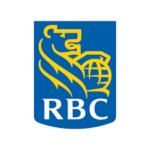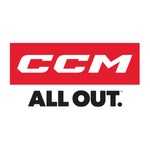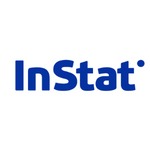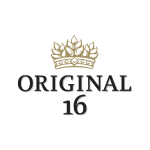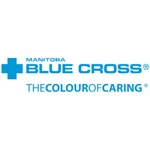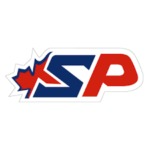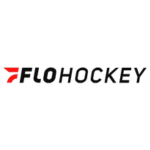The Western Hockey League continues to be regarded as one of the finest development leagues in the world today. For young hockey players in the west, the WHL offers one of the best environments to develop. Recognized world-wide as a leader in player development for junior age prospects, the WHL allows players the opportunity to reach their full potential.
The WHL has been the leading supplier of player talent at many levels:
More WHL players are selected each year in the NHL Entry Draft than any other league in the world. (Currently 20% of all players in the NHL are WHL graduates.)
The WHL awards more post-secondary scholarships each year than any other league in North America. (Each year over 400 WHL current and graduate players are recipients of the WHL Scholarship.)
The WHL experience offers the players the best opportunity to improve their game through outstanding coaching and training facilities combined with a highly competitive schedule.
The WHL offers an ideal, balanced environment that allows a player to reach the Top of the Class …. both on and off the ice.
Players who reside in Alberta, BC, Manitoba, Saskatchewan, Northwest Territories, Yukon, Alaska, Arizona, California, Colorado, Hawaii, Idaho, Kansas, Minnesota, Montana, Nebraska, Nevada, New Mexico, North Dakota, Oklahoma, Oregon, South Dakota, Texas, Utah, Washington and Wyoming are protected for the WHL and are eligible to be listed by WHL clubs through regular WHL listing procedures. All Canadian and US players from the WHL protected territory shall be eligible for the Bantam Draft in the calendar year that they turn 15.
The WHL Bantam Draft is normally held on the first Thursday in May. When a player is drafted, he is notified by the club and is invited to either a spring/summer camp or to the team’s rookie camp in the fall. Players who are not drafted can be invited to a team’s rookie camp in the fall, or can be listed by a WHL club at any time after the Bantam Draft.
WHL Eligibility Rules:
The Player Protected List is used by the WHL to ensure there is a method of organization and control in the league for the rights to players.
Each WHL team is permitted to place a maximum of 50 players between the ages of 15 and 20 on their list. A player may not be added to a WHL list until he has been eligible for the WHL Bantam Draft.
All players on a WHL team’s roster are required to be on the Player Protected List, so if a WHL team is carrying 23 players, this leaves only 27 spots available for future prospects.
The list is constantly changing as teams evaluate their players and make adjustments. Teams are permitted to make changes to their 50 Player List throughout the entire year.
WHL Education
The WHL provides the top young hockey talent in the west with the opportunity to develop their skills on the ice at the highest possible level, without compromising their academic goals.
Each WHL Club’s Education Advisor, along with the WHL Director of Education Services, tracks the academic progress of all players throughout the season. While playing in the WHL, players receive financial assistance for education expenses such as high school tutoring or fees for postsecondary courses to ensure players reach their academic potential.
While a player’s primary on-ice goal is to win the WHL Championship and compete for the storied Memorial Cup, it is equally important for that player to set his signts on academic success as well. WHL clubs are governed by league-wide education standards that ensure players complete their high school in timely fashion and achieve the highest level of academic success possible. The WHL is committed to recognizing academic excellence. Awards are presented annually to the WHL’s Scholastic Player and Scholastic Team of the Year.
What is the WHL Scholarship Program?
The WHL recognizes the paramount importance that parents and players place on education. That is why the WHL and Canada West Universities have teamed up to provide Western Canada’s Premiere Hockey Scholarship.
For every season a player plays in the WHL, they receive a full year guaranteed scholarship, including tuition, textbooks and compulsory fees, to a postsecondary institution of their choice. For example, players graduating from a four-year WHL career are eligible to receive four years of scholarship funding.
The WHL scholarship, combined with additional financial assistance from Universities in Western Canada, makes the WHL – Canada West Universities joint scholarship equivalent to any other offer available in North America today.
Since 1993, Western Hockey League clubs have provided close to 3500 scholarships representing an investment in excess of $10 million, making the WHL the leading provider of hockey scholarships in Western Canada.
The WHL scholarship not only encourages its graduates to pursue a post-secondary education, it also affords graduates the opportunity to continue playing hockey at an elite level in the Canadian University or College systems. Each year over 230 WHL graduates receive a WHL scholarship.
The Western Hockey League Scholarship
While playing in the WHL, all players have access to post secondary courses through local colleges or virtual schools. The tuition and book costs for these courses are the responsibility of the club. These education expenses do not impact on the WHL scholarship benefits the player is entitled to upon graduating from the WHL.
For graduate players:
WHL scholarship benefits include tuition fees, compulsory student fees and textbooks.
Tuition fees are based on the cost of an Arts or Science undergraduate program at a designated publicly funded university in the player’s home province or state.
The WHL scholarship is fully guaranteed, through the WHL Standard Player Agreement and can be assessed to fund any post secondary, career enhancing program anywhere in the world.
One full year of financial education assistance is earned if the player is on the roster after January 10th to a maximum of five years. One half year funding is earned if the player is on the roster after October 10th.
The WHL scholarship can be accessed through the WHL office once the graduate player enrolls as a full time student.
The graduate player may play one year in a development professional league (i.e. ECHL or lower category) without forfeiting their WHL scholarship benefits.
Should a player sign a professional hockey contract at the NHL, AHL or elite European level, the scholarship benefits are voided with the WHL Standard Player Agreement.
Two Approaches – WHL or NCAA Hockey
At the age of 14, 15 or 16, hockey players, with the abilities and aspirations of playing at the next level of hockey, face an important questions: “Is my goal to play in the Western Hockey League (WHL) or pursue a hockey scholarship in the United States at a National Collegiate Athletic Association (NCAA) college?“
The NCAA considers major junior hockey to be professional and therefore renders a player ineligible for NCAA participation if the student athlete is involved with a professional team.
Canadian Hockey League – CHL
The Canadian Hockey League is the governing body that coordinates the efforts of the three Major Junior leagues in Canada – the Western Hockey League, the Ontario Hockey League and the Quebec Major Junior Hockey League.
Through this level, information on all Major Junior players is distributed to the NHL, minor leagues and media sources.
Tasks to Consider:
- Without compromising your education or hockey goals, work to being the best you can be in both areas to prepare yourself to make a good decision for you as you grow and mature.
- Ask all the questions, talk to players, parents and coaches that have had experience in teh WHL, Canadian Universities and the NCAA.
- Check the following website – http://www.whl.ca
















